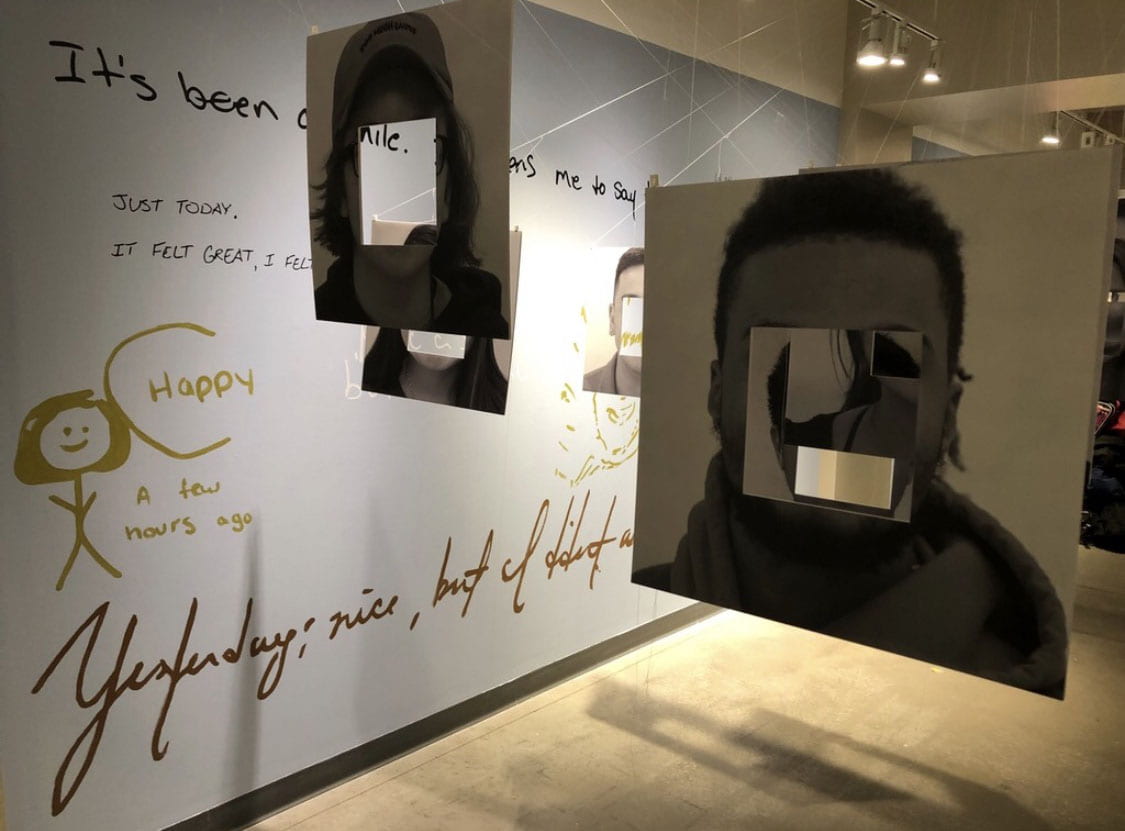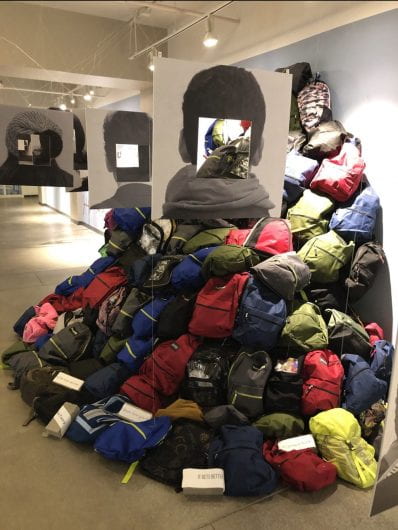
The conversation around the “Me/We” exhibit continues Oct. 5 with the virtual event, “The Space Behind Our Eyes: A Conversation about Mental Health.” Credit: Courtesy of William Nickley and Jeffrey Haase
It was 30 days before the start of the 2019 fall semester when Jeffrey Haase, associate professor in the Department of Design at Ohio State, was asked to teach a graduate course to make up for one of his courses that was canceled due to financial issues.
“I want to teach [this] class, and I don’t want you to ask any questions about it. You have to trust me, and the class is going to be about the art of doing nothing,” Haase said.
Now, more than a year after the course that started out as a favor to the Department of Design was finished, the conversation surrounding it will continue through the free virtual event “The Space Behind Our Eyes: A Conversation about Mental Health.” On Monday at 12:45 p.m., Haase will continue the advocacy for destigmatizing mental health he started within his course when his students created the art exhibit “Me/We.”
Haase will be joined by three colleagues at the event: William Nickley, assistant professor in the Department of Design and former graduate student of Haase; Merijn van der Heijden, director at Urban Arts Space; and Genevieve Wagner, intern at Urban Arts Space and a fourth-year in studio.
Haase’s art of doing nothing course was based on the book “How to do Nothing: Resisting the Attention Economy” by Jenny Odell. The book discusses mental health and the anxiety issues that students face these days, Haase said.
“This whole idea of culturally creating so much pressure about being busy, being effective, being efficient and then throwing all this social media and other things at us to where we can’t take a break from it is obviously a big part of the anxiety culture that exists right now,” Haase said.
Haase and his class of 11-12 graduate students began to look at what created this mental health crisis within culture, specifically on Ohio State’s campus. The students found ways to investigate the situation of mental health on campus by setting up interactions with students and researching what the university does to help people deal with mental health issues, Nickley, said.
“We kept running into two sets of things: really, really powerful barriers to getting the kind of help that people wanted and really powerful stories from people who were even surprised to be asked the question about how they were doing or how they dealt with anxiety, mental health,” Nickley said.
The class was then prompted, despite being tasked with doing nothing, to fulfill the course’s requirement of designing a space that incorporated the research they’d gathered on students’ mental health, Nickley said — a process that took an emotional toll on everyone involved.
“There’s this idea of self-care, but there’s also being present for someone else and being present in a way that’s so anti-designer that you’re not just there to solve their problem,” Nickley said.
Haase’s class recognized a theme of duality surrounding their project and mental health. Haase and his class realized they did not need to create a space within the “Me/We” exhibition, but rather an experience. The real idea isn’t about the physical elements; it’s about the unique experiences people go through with their mental health, Haase said.
“There’s this complexity that is purposefully revealed because this is such a complex problem. You can’t solve it the way the university does by trying to assign it the same type of care and policies that they do physical health, because physical health does not represent the kinds of things that are needed for mental health,” Haase said.
“Me/We” captured this experience at its debut in early March at the Urban Arts Space, but it was closed shortly after due to the onset of the pandemic. It was taken down in late September, an irony Haase said plays into the duality of the exhibition.
“It was the longest running [exhibit] with the least amount of people seeing it because it was closed the entire time it was up,” Haase said.

A pile of book bags representing students struggling with mental health is featured as a focal point in the “Me/We” exhibit in the Urban Arts Space. Credit: Courtesy of William Nickley and Jeffrey Haase
Featuring photos missing the eyes, mouths and noses of the students interviewed for the project, “Me/We” invites viewers to think about the space behind their eyes, Nickley said. The exhibit features audio coming from a pile of book bags in the middle of the exhibition as well as quotes taken from interviews with students that are written on the walls in their own handwriting, asking viewers to reflect not only on their own experiences, but on those of others.
Haase said the virtual event is an effort to continue advocating for mental health with the end goal of bringing the “Me/We” exhibition to other college campuses.
“That allows the conversation to get itself out of the shadows, and that’s really important to start providing opportunities for those voices not to just be heard but for something intelligent, something worthwhile to actually be done about it,” Haase said.
“The Space Behind Our Eyes: A Conversation about Mental Health” will take place Monday at 12:45 p.m. The event is available for pre-registration on the College of Arts and Sciences’ events page.
Correction: A previous version of this story misspelled Haase’s first name. The spelling has been corrected.


